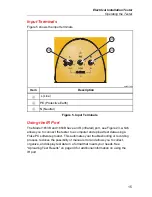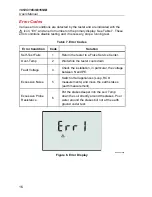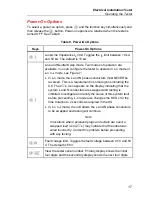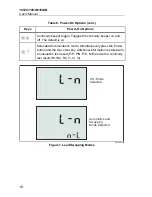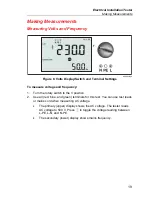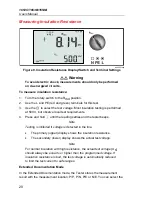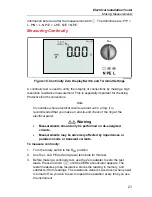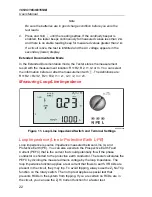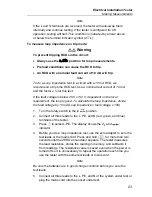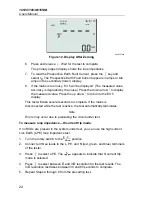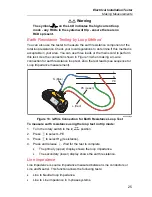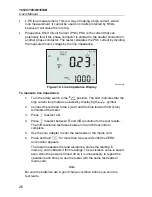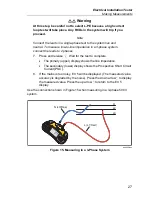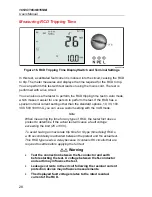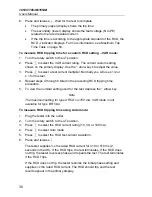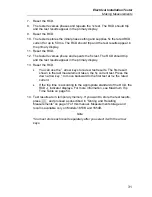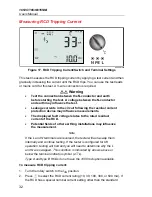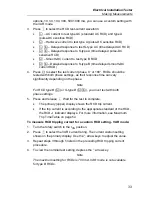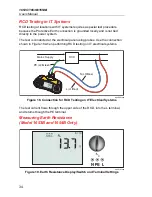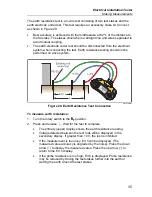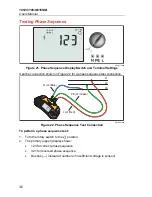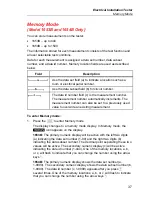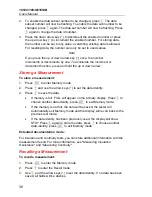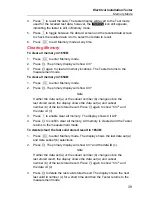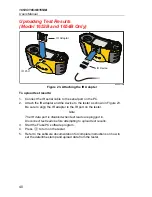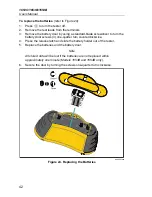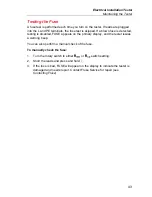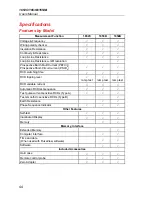
Electrical
Installation
Tester
Making
Measurements
29
•
Potential fields of other earthing installations may influence
the measurement.
•
Equipment (motors, capacitors) connected downstream of
the RCD may cause considerable extension of the tripping
time.
Note
If the L and N terminals are reversed, the tester will auto-swap them
internally and continue testing. If the tester is configured for UK
operation, testing will halt and you will need to determine why the L
and N are swapped. This condition is indicated by arrows above or
below the terminal indicator symbol
(
)
.
Type A and type B RCDs do not have the 1000 mA option available.
To measure RCD tripping time:
1. Turn the rotary switch to the
Δ
T position.
2. Press
to select the RCD current rating (10, 30, 100, 300, 500, or
1000 mA).
3. Press
to select a test current multiplier (x ½, x 1, x 5, or Auto). Normally
you will use x 1 for this test.
4. Press
to select the RCD test-current waveform:
•
– AC current to test type AC (standard AC RCD) and type A
(pulse-DC sensitive RCD)
•
– Half-wave current to test type A (pulse-DC sensitive RCD)
•
– Delayed response to test S-type AC (time delayed AC RCD)
•
– Delayed response to S-type A (time delayed pulse-DC
sensitive RCD)
•
– Smooth-DC current to test type B RCD
•
– Delayed response to S-type B (time delayed smooth-DC
current RCD)
5. Press
to select the test current phase, 0
°
or 180
°
. RCDs should be
tested with both phase settings, as their response time can vary
significantly depending on the phase.
Note
For RCD type B
(
)
or S-type B
(
)
, you must test with both
phase settings.
Содержание 1652C
Страница 6: ...1652C 1653B 1654B Users Manual iv ...
Страница 8: ...1652C 1653B 1654B Users Manual vi ...

